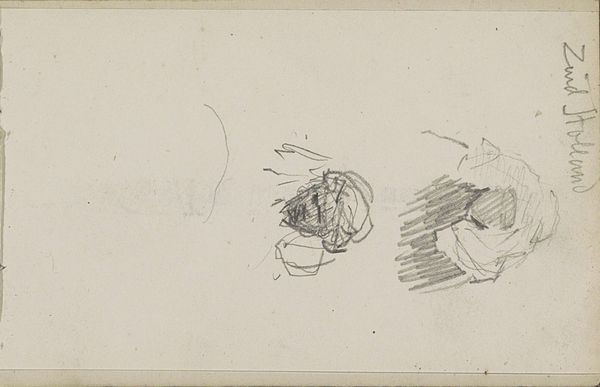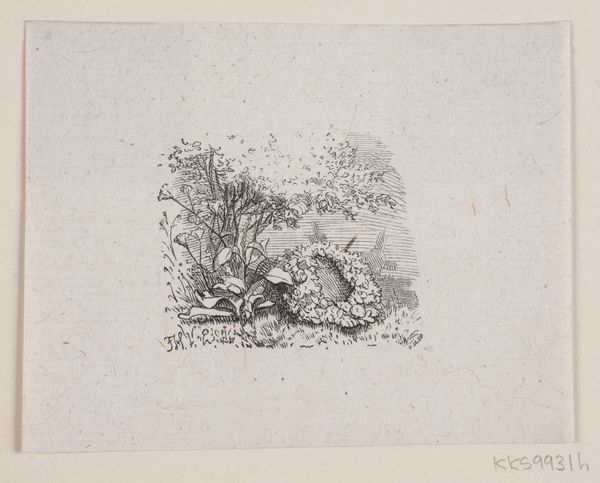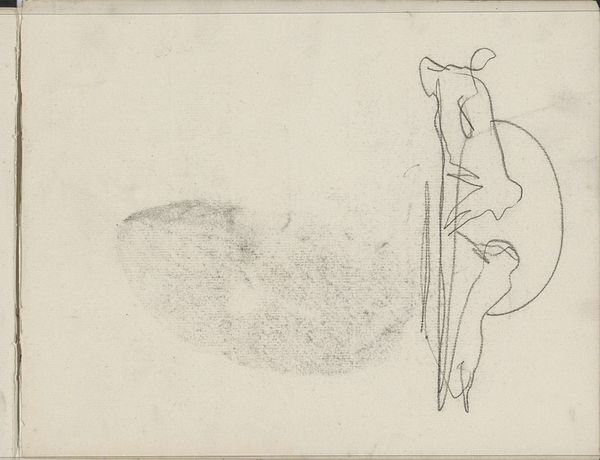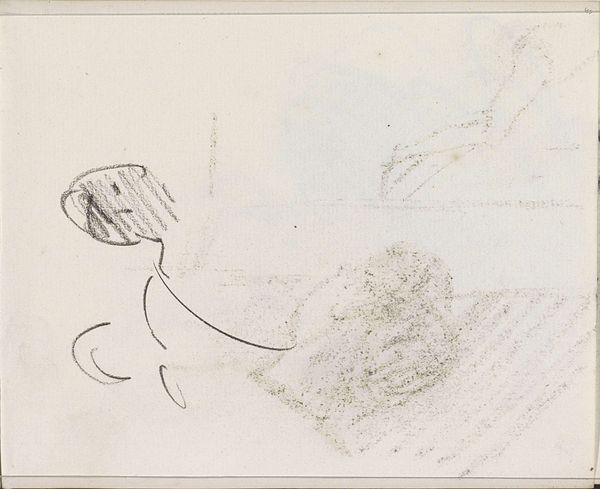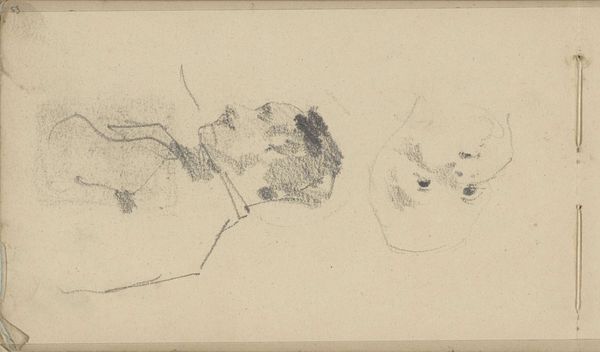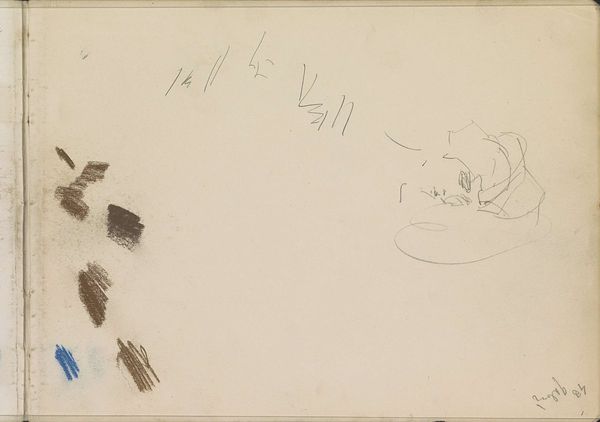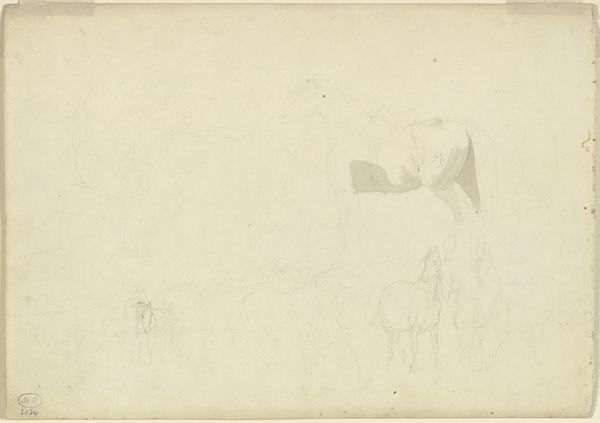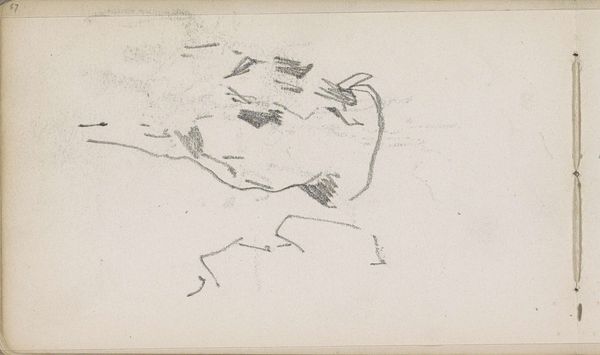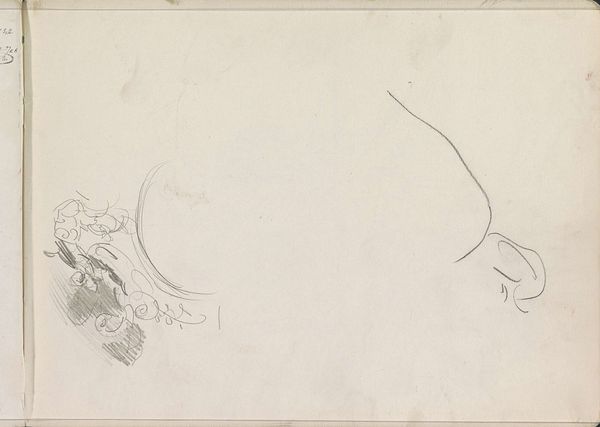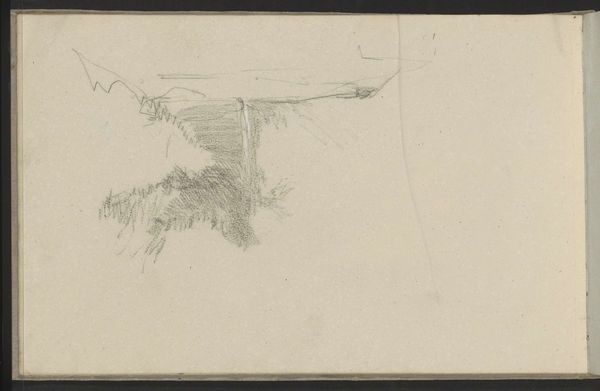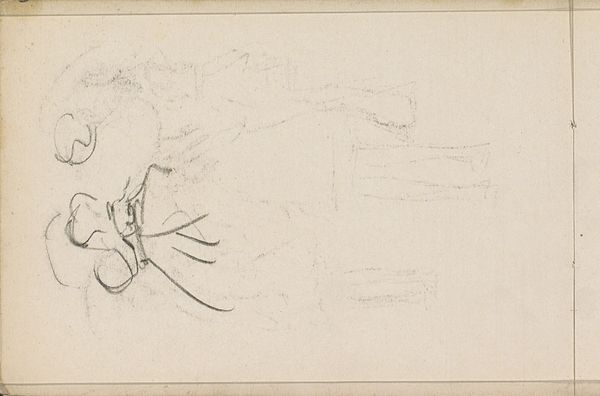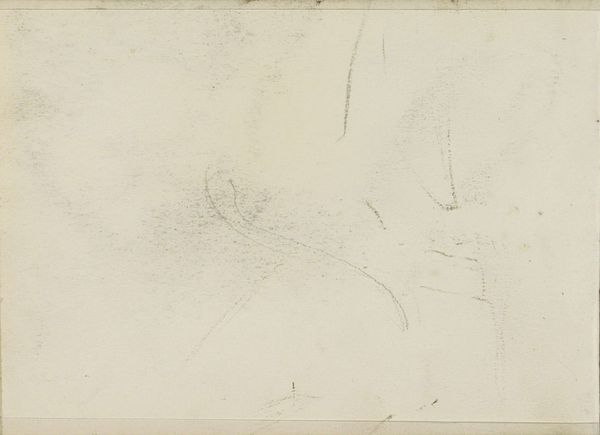
drawing, print, etching, pencil
#
drawing
# print
#
etching
#
pencil sketch
#
landscape
#
pen-ink sketch
#
pencil
#
pencil work
Dimensions: 112 mm (height) x 159 mm (width) (bladmaal)
Curator: At first glance, I’m struck by the delicate touch. There’s a misty, almost dreamlike quality to this sketch. Editor: This is "Illustration til 'Bamse Brakar'" by F. Hendriksen, created sometime between 1870 and 1878. It's a combination of drawing and printmaking, using etching and pencil work to create a landscape scene. "Bamse Brakar" refers to a literary work, situating this piece within a specific cultural and potentially political context of the time. Curator: Absolutely, the narrative connection is key. Who was "Bamse Brakar" and what did they represent to the late 19th-century Danish audience? Was it a progressive or conservative figure, and how does this illustration reinforce or challenge that image? The soft pencil work feels almost subversive, undermining the macho posturing of the titular figure perhaps? Editor: Perhaps. Formally speaking, the loose application of lines and shading suggests a preliminary study rather than a finished illustration, giving a sense of immediacy. I'm intrigued by how Hendriksen uses the white space of the paper. It almost feels as important as the drawn elements, creating an ethereal quality. Curator: It invites the viewer to co-create the image, filling in the blanks with our own preconceptions and experiences. Considering the era, the themes present in 'Bamse Brakar' are likely linked to identity formation. One might ponder if the lack of rigid lines here could represent a subtle subversion of rigid social expectations in Danish society, particularly relating to masculinity and landscape ownership. Editor: Or perhaps the ambiguity reflects the fluidity and ever-changing nature of the landscape itself. The gestural marks and varying line weights create a real sense of depth despite the lack of detail. I think what I'm enjoying most is that the sketchy and raw composition, despite its small size, implies much bigger scenery. Curator: It makes me wonder if the choice of medium, etching combined with pencil, allowed Hendriksen to reach a wider audience with illustrations that carried layers of political meaning. Editor: For me, considering solely the formal qualities, the piece exists in a state of beautiful, incomplete becoming. It feels unresolved in a good way. Curator: It’s clear Hendriksen provides not just an image, but a portal into a deeper conversation about cultural values and shifting perceptions. Editor: Yes, I see both your argument for sociopolitical influence and the image’s intrinsic aesthetic merits.
Comments
No comments
Be the first to comment and join the conversation on the ultimate creative platform.
